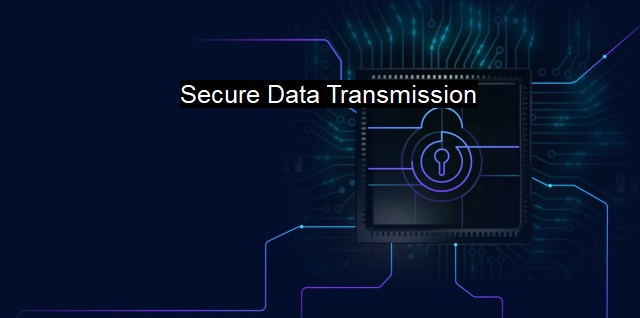What is Secure Data Transmission?
Securing Data Transmission: Importance, Protocols, and Antivirus Software for Cybersecurity in the Modern Technological Age
Secure data transmission is a critical aspect of cybersecurity. It refers to the process of transferring data from one device or network to another in such a way that it becomes unreadable or inaccessible to unauthorized individuals or systems. This transfer could be undertaken between various systems, over multiple types of networks – wireless, wired, or the internet – and involving various devices like computers, servers, or mobile devices.For a data transmission to be considered secure, there are three fundamental attributes - data integrity, confidentiality, and availability. Data integrity encompasses maintaining and assuring the accuracy and consistency of data throughout its entire life-cycle. It means that no unauthorized user can change the data in any way. This attribute aims to protect data from accidental or deliberate changes.
Confidentiality refers to protecting information from unauthorized access and disclosure. It ensures that only authorized individuals or systems can access transmitted information. This principle helps to thwart malicious practices like eavesdropping and interception during the transit of data.
The availability aspect ensures that data is accessible to authorized users without interruptions whenever needed. A secure data transmission mechanism takes steps to prevent any form of denial of service attacks that may disrupt availability.
Under the umbrella of secure data transmission, various strategies, methods, and technologies are utilized. Encryption is one of the most common techniques, involving the conversion of original data into a form that can only be understood by an authorized individual who owns the decryption key. There are two types of encryption techniques: symmetric encryption (private-key cryptography) and asymmetric encryption (public-key cryptography). Symmetric encryption uses the same key for the encryption and decryption, while asymmetric uses different ones.
The choice of technique often relies on data sensitivity, privacy regulations, and the type of vulnerabilities that the data could be exposed to during transmission.
Secure Sockets Layer (SSL) and Transport Layer Security (TLS), both cryptographic protocols, are other commonly used strategies for securing data transmission. They provide secure communication by encrypting data before it's sent over a network, preventing unauthorized access during transmission. SSL/TLS is globally accepted and is used by millions of websites to protect online transactions.
VPNs, or Virtual Private Networks, add another layer of security. VPNs create a secure, encrypted tunnel between a user's device and the VPN server, protecting data that travels through this tunnel from interception.
Secure data transmission is also pivotal when involving antivirus software. It scans, detects, and neutralizes threats before they compromise a system. Antiviruses can protect from incoming threats but also ensure secure data transmission by preventing data leaks and intercepting malware that may aim to transmit data to a hacker.
It's imperative to understand that data is valued highly, not just by the owners but also by attackers. The data, more often than not, carry personal, financial, or even national security details. Even a minor breach can lead to significant losses. Therefore, secure data transmission is an essential part of safeguarding our digital world – a task that grows increasingly crucial as data generation expands.
In general terms, every data transmitted, especially over the internet, faces the risk of interception or alteration. In this context, secure data transmission means making it virtually impossible for such malicious activities to occur. With a rise in cyber threats and the increasing importance of privacy and security, secure data transmission has become a critical component of any cybersecurity strategy.

Secure Data Transmission FAQs
What is secure data transmission?
Secure data transmission refers to the process of sending and receiving sensitive information in a way that prevents unauthorized access, interception, or manipulation. It involves using encryption, authentication, and other security measures to protect the confidentiality, integrity, and availability of the data while in transit.What are some common threats to data transmission security?
Common threats to data transmission security include eavesdropping, interception, man-in-the-middle attacks, phishing, malware, ransomware, and denial-of-service attacks. These threats can result in data breaches, data loss, identity theft, financial fraud, and other forms of cybercrime.What are some best practices for ensuring secure data transmission?
Some best practices for ensuring secure data transmission include using strong encryption algorithms, implementing secure protocols such as HTTPS and VPN, verifying the identity of the sender and recipient, avoiding public Wi-Fi networks, keeping software and security patches up to date, using two-factor authentication, and regularly backing up important data.How can antivirus software help in securing data transmission?
Antivirus software can help in securing data transmission by detecting and blocking malware, viruses, and other malicious software that may be used to compromise the security of the data in transit. It can also provide additional security features such as firewall protection, spam filtering, and web protection that can help guard against phishing attacks and other online threats. However, antivirus software alone is not enough to ensure secure data transmission; it should be used in conjunction with other security measures such as encryption and authentication.| | A | | | B | | | C | | | D | | | E | | | F | | | G | | | H | | | I | | | J | | | K | | | L | | | M | |
| | N | | | O | | | P | | | Q | | | R | | | S | | | T | | | U | | | V | | | W | | | X | | | Y | | | Z | |
| | 1 | | | 2 | | | 3 | | | 4 | | | 7 | | | 8 | | |||||||